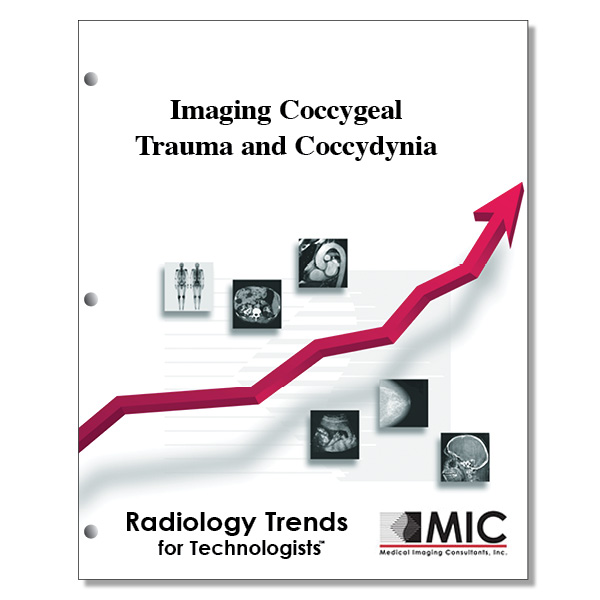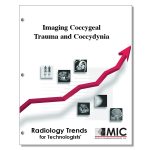

Imaging Coccygeal Trauma and Coccydynia
A review of the various causes of coccydynia, their respective imaging features, and common management strategies.
Course ID: Q00669 Category: Radiology Trends for Technologists Modalities: CT, MRI, Radiography1.75 |
Satisfaction Guarantee |
$24.00
- Targeted CE
- Outline
- Objectives
Targeted CE per ARRT’s Discipline, Category, and Subcategory classification:
Computed Tomography: 1.75
Procedures: 1.75
Head, Spine, and Musculoskeletal: 1.75
Magnetic Resonance Imaging: 1.75
Procedures: 1.75
Neurological: 1.75
Radiography: 1.75
Procedures: 1.75
Head, Spine and Pelvis Procedures: 1.75
Registered Radiologist Assistant: 1.75
Procedures: 1.75
Neurological, Vascular, and Lymphatic Sections: 1.75
Outline
- Introduction
- Anatomy
- Osteology
- Attachments
- Neurologic Structures
- Idiopathic and Traumatic Coccydynia
- Dynamic Imaging
- MR Imaging
- Treatment
- Other Causes of Coccydynia
- Neoplasm
- Infection
- Cycts
- Crystal Deposition
- Referred and Neurogenic
- Conclusion
Objectives
Upon completion of this course, students will:
- be familiar with the anatomy of the coccyx
- be familiar with the curvature Types of the coccyx
- be familiar with curvature Types most common in females
- identify the curvature Type most frequently associate with coccydynia
- be familiar with the attachments of the coccyx and sacrococcygeal region
- be familiar with Waldeyer fascia
- be familiar with the anocococcygeal ligament
- be familiar with the ganglion impar and its function
- identify the modality recommended to diagnose an acute fracture of the coccyx
- recognize the different categories of idiopathic and traumatic coccydynia
- be familiar with the predominance of coccydynia based on gender
- be familiar with the patterns of hypermobility associated with coccydynia
- recognize the degree of motion associated with rigid coccyx
- be familiar with the patient positioning when performing dynamic imaging
- be familiar with the MRI techniques used to evaluate coccydynia
- be familiar with the histological changes of those undergoing coccygectomies
- understand the effectiveness of conservative treatment of coccydynia
- be familiar with those that would perform manual therapy to treat coccydynia
- identify the targets for steroid or anesthetic injection for treatment of coccydynia
- be familiar with the effectiveness of CT-guided ganglion impar blocks for treating coccydynia
- identify the greatest risk factor for those undergoing a coccygectomy
- recognize how a chordoma appears in medical imaging
- recognize the appearance of a chordoma on MR imaging
- be familiar with the occurrence of pilonidal cysts and sinuses
- be familiar with the patient profile for those presenting with pilonidal cysts
- be familiar with the findings of calcium deposition in sacrococcygeal or intercoccygeal joints
- identify the calcium crystals that have been found in the discs of the spine
- be familiar with the MR imaging sequence utilized to demonstrate a pilonidal cyst
- be familiar with the imaging modality used to image focal calcifications in the coccygeal body
- be familiar with the role of CT and MRI in the work-up of a patient with coccydynia
